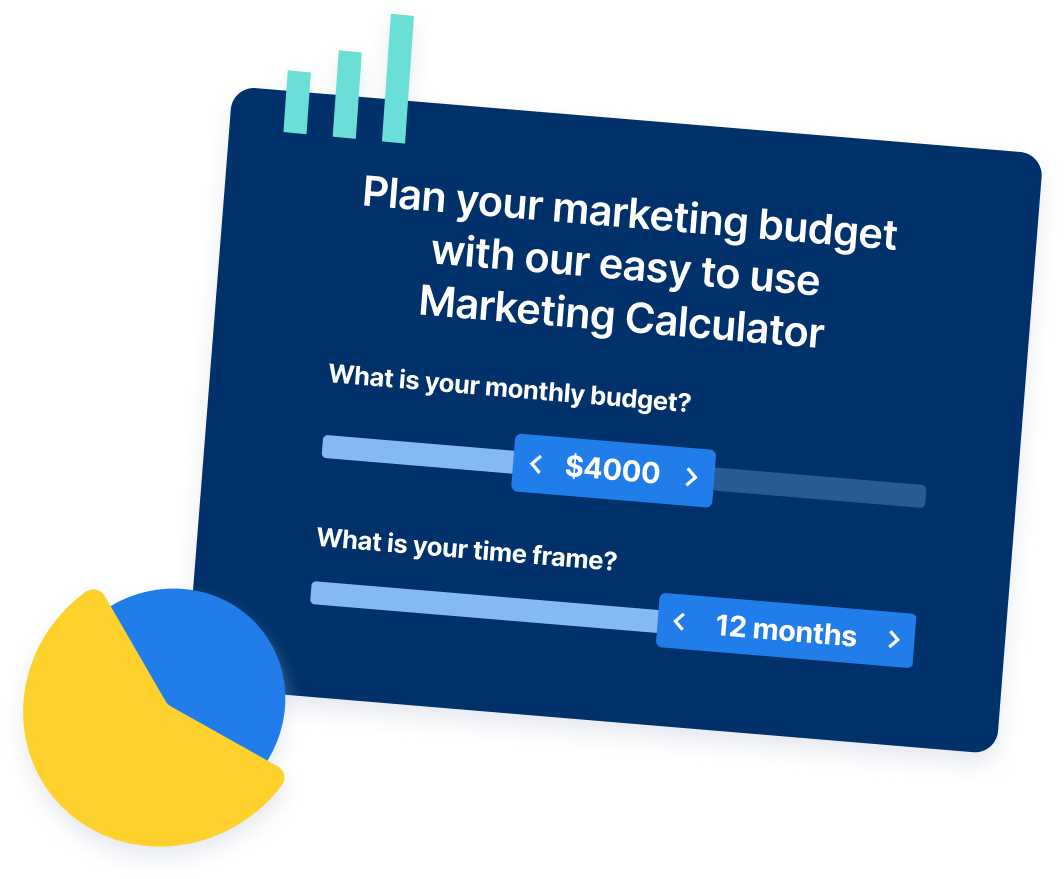- Home
- Blog
- Email Marketing How To Write an Email Marketing Report for Your Team
How To Write an Email Marketing Report for Your Team
-
 Published: Nov 25, 2024
Published: Nov 25, 2024
-
 6 min. read
6 min. read
-
 Abbey Stephan
Abbey Stephan Lead Editor
Lead Editor
- Abbey is a digital marketer, copywriter, and lead editor. She has worked on over 200 client campaigns and WebFX, and she specializes in marketing strategy analysis and industry-specific digital marketing plans. Outside of writing and editing, you’ll likely find her taking pictures of her cat, making a new playlist, or tending to her houseplants.
Creating a solid email list for your company builds relationships with clients and prospects. You can communicate with them directly and personalize your content to each recipient.
Once you’ve pressed send, however, you need a way to analyze your email campaign.
A good email marketing report educates others about your email efforts, including your successes and next moves. We’re here to help you write comprehensive reports that evaluate and improve your email strategy.
Here’s what we’ll cover:
- Our email marketing report template
- What to include in an email marketing report
- How to write an email marketing report
P.S. Looking for a new way to track your email metrics and simplify reports? Contact us online to learn more about RevenueCloudFX, our industry-leading reporting software!
Our email marketing report template
Whether you want to change your approach, or you’ve never written an email report before, a template can come in handy. Download our free email marketing report template here:
 Download Now: Free Email Marketing Report Template
Download Now: Free Email Marketing Report Template
What to include in an email marketing report
You can make your email marketing report more interesting and accurate by knowing what to include. Below you’ll find the basic elements that every email report should have to be effective.
Introduction
Start your report with a brief introduction to set the stage. This section will help readers understand the basics behind your campaign to get more out of the data you include. You can include:
- A brief description of the campaign
- Your campaign objectives and goals
- Your campaign audience and strategy
- The date range of your campaign
Campaign details
Next, you should include the details of your campaign. Describe the content of your emails and include specific examples. Note the timing and frequency of your emails, as well as any other specifics, like audience variations or personalized aspects.
Key metrics
Your key metrics will make up most of your data, but you can include a section that explains what metrics you chose and why. Your metrics will measure different aspects of your email campaign and show how your emails performed overall.
Here are some crucial key performance indicators (KPIs) you might include in your report:
- Open rate
- Bounce rate
- Click-through rate (CTR)
- Conversion rate
- Engagement over time
- Number of subscribers
- Unsubscribe rate
You should be tracking your campaigns with an email marketing or analytics platform. For example, you can use Google Analytics to track the metrics you need for your email marketing reports.
Audience insights
Your audience insights will show how your audience interacted (or didn’t interact) with the emails in your campaign. You can use this section to get into the details of how this email campaign impacted your overall email efforts.
For example, you can look at new subscribers, how each segment performed, which emails worked best, and more.
Conclusions and next steps
Finally, you should include your overall conclusions and recommendations for moving forward. Explain the following:
- What the data is showing
- What worked well and what didn’t
- Actions your team should take moving forward
- Unexpected results or outliers
Be sure to detail any recommended tests or changes to implement that will further optimize your campaigns.
Supplementary data
Your supplementary data will include your index and any additional information that supports the main report, but might be too much information upfront. You can include more in-depth breakdowns of customer segments, full email copy examples, or further analysis.
How to write an email marketing report
So, when it comes down to it, how do you write an email marketing report? Here’s a checklist of steps to follow to help you create your first draft:
How To Write an Email Marketing Report
1. Outline your objectives
The first step to writing an email marketing report is outlining your purpose and objectives. What do you want to accomplish with this report? Do you want to:
- Show trends in audience behavior?
- Highlight email performance over time?
- Find ways to boost revenue from your email campaign?
Regardless of what your goal is, it’s important to have one to structure your report. Even a general report of how your email marketing is going will have the goal of educating your team or higher-ups.
2. Gather your KPIs
Once you have your goals, you can start looking at the best KPIs to suit your report. You might not include every single piece of data, especially if it isn’t relevant to your goal.
For example, let’s say that you want to track audience engagement. The KPIs you track might include:
- Open rate
- CTR
- Conversions
You might not consider your return on investment (ROI), for example, since you are focusing specifically on engagement.
3. Collect and segment data
The next step is to collect the data related to your goal(s) and KPIs. Tools like Google Analytics let you export your data easily, so you have it in one place while writing your report.
You can then segment the data based on demographics, campaign, and type of email to make it more digestible.
4. Apply data to attractive visuals
After you gather and segment the data related to your KPIs, you can start creating visuals for that data. Graphs, charts, and tables are all attractive ways to present data to your readers without overwhelming them. You should still break down these visuals with explanations, though.
Remember to balance text and images and label your graphs clearly. Muddy figures or blank labels could lead readers to misunderstand your information.
5. Draw insights and conclusions
Your insights should be the meat of the report, and they will likely be the last piece you add. In this section, you should break down the following:
- Why you chose the data you did
- What this data shows about your email campaign
- Where you should go from here as a team
This final section should leave a lasting impression on the reader and give actionable takeaways to other marketers working on the email campaigns.
6. Compile your report
Once you have completed all the pieces above, you can compile your data and findings into one neat document. Be sure to proofread your work and have someone else look over the report before you present.
7. Present and ask for feedback
Finally, present your report however your organization prefers, whether that’s a PowerPoint presentation or a simple handout and explanation. Be sure to ask for feedback from the readers to improve your future reports and dive further into the content.
WebFX has thousands of reviews praising our transparency, communication, and results.
WebFX Agency Rating





4.9/5
based on over 550 third-party reviews





based on over 550 third-party reviews

Master email marketing with WebFX!
Now that you know the ins and outs of email marketing, it’s time to evaluate your strategy through data-backed reports. That’s where having WebFX as a partner can make all the difference in your campaign.
With email marketing services and RevenueCloudFX from WebFX, you can launch and track campaigns that engage your subscribers and turn them into converting customers. You can get more insights from every campaign and make your reports more detailed and interesting for any audience.
Want to learn more? Contact us online or call 888-601-5359 today!
-
 Abbey is a digital marketer, copywriter, and lead editor. She has worked on over 200 client campaigns and WebFX, and she specializes in marketing strategy analysis and industry-specific digital marketing plans. Outside of writing and editing, you’ll likely find her taking pictures of her cat, making a new playlist, or tending to her houseplants.
Abbey is a digital marketer, copywriter, and lead editor. She has worked on over 200 client campaigns and WebFX, and she specializes in marketing strategy analysis and industry-specific digital marketing plans. Outside of writing and editing, you’ll likely find her taking pictures of her cat, making a new playlist, or tending to her houseplants. -

WebFX is a full-service marketing agency with 1,100+ client reviews and a 4.9-star rating on Clutch! Find out how our expert team and revenue-accelerating tech can drive results for you! Learn more
Try our free Marketing Calculator
Craft a tailored online marketing strategy! Utilize our free Internet marketing calculator for a custom plan based on your location, reach, timeframe, and budget.
Plan Your Marketing Budget

Looking for More?
Get expert ideas, industry updates, case studies, and more straight to your inbox to help you level up and get ahead.
"*" indicates required fields

Proven Marketing Strategies
Try our free Marketing Calculator
Craft a tailored online marketing strategy! Utilize our free Internet marketing calculator for a custom plan based on your location, reach, timeframe, and budget.
Plan Your Marketing Budget





